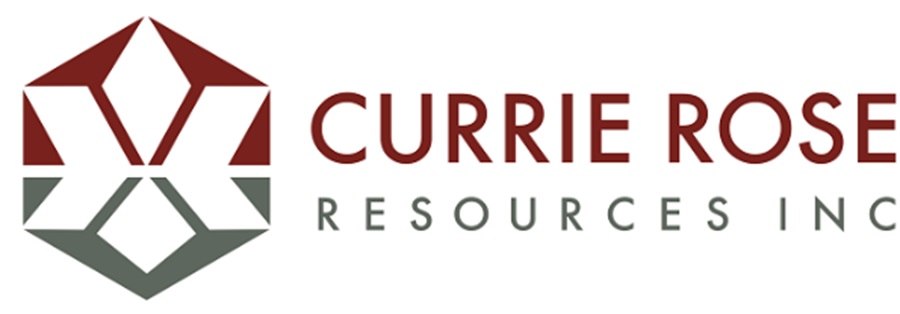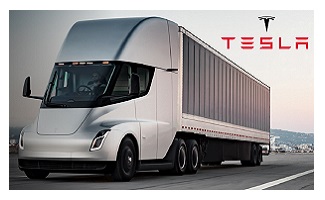The report covers various aspects of the Vanadium industry including Supply, Demand, Pricing, Uses for Vanadium, and includes a list of Vanadium mining companies, as well as highlights Currie Rose Resources (TSXV:CUI), an advanced, resource-stage company, with a vanadium project in Australia.
The 18-page report can be downloaded here: eR – Vanadium_2022-12-16_FINAL
Report Highlights:
- The 18-page report covers various aspects of the Vanadium industry including Supply, Demand, Pricing, Uses for Vanadium, and includes a list of Vanadium mining companies (from exploration companies to producers), as well as highlights Currie Rose Resources Inc. (TSXV:CUI), an advanced, resource-stage company, with a vanadium project in Australia that is undervalued compared with some its peers.
- 4 main reasons to look at investing opportunities in Vanadium now:
- Shift to Renewable Energy Could Trigger a Surge in Demand
- The use of vanadium in renewable energy storage solutions, such as Vanadium Redox Flow Batteries (VRFB), is an efficient and cost-effective alternative to existing lithium-ion (Li-ion)-based batteries.
- A redox flow battery (RFB) is an electrochemical energy storage device that converts chemical energy into electrical energy.
- An RFB differs from other conventional rechargeable batteries in that the energy storage occurs in a liquid media and the charging and discharging processes can occur within a single cell.
- The VRFB is a type of RFB that uses vanadium ions as the charge carriers and has two separate tanks in which one tank contains the positive electrolyte and the second tank contains the negative electrolyte.
- Advantages over Lithium-ion batteries include:
- Significantly longer cycle lifetimes and performance result in a lower overall energy storage cost
- Scalability: Can be scaled for small to large energy storage projects
- Reusability: Nearly 100% of the liquid electrolyte used in a VRFB can be recovered and reused
- Safety: Flow batteries do not contain toxic materials and, because the battery’s electrolyte is in an aqueous form, it makes the technology inherently nonflammable and safe
- Currently, it is estimated that the VRFB market only accounts for 3%-5% of vanadium production but the continued shift to renewable energy solutions could trigger a surge in vanadium demand and account for 20% of vanadium consumption by 2030.
- Demand Across Various Applications Continues to Grow
- The majority of all vanadium produced is used as an alloying agent for strengthening steel. Vanadium producers have recently benefited from an increase in infrastructure spending.
- However, the demand for vanadium also continues to increase with other applications, including in the aerospace industry and the production of vanadium redox batteries.
- Potential Supply Deficit as Early as 2025
- Various supply-demand forecasts have vanadium in a supply deficit starting around 2025. Without additional supply to meet the demand, the price of vanadium could remain above historical averages.
- Domestic Sources Needed to Secure Supply Chains
- Over 66% of vanadium production comes from China, while China and Russia together account for over 83% of world mine production.
- With recent geopolitical and supply chain issues, Australian, European, and North American industries need to secure a domestic supply chain for critical minerals, including vanadium.
Company Spotlight:
 Currie Rose Resources is an advanced-stage exploration and development company focused on its 100%-owned North Queensland Vanadium Project (NQVP) located within the mining-friendly vanadium hub in central Queensland, Australia.
Currie Rose Resources is an advanced-stage exploration and development company focused on its 100%-owned North Queensland Vanadium Project (NQVP) located within the mining-friendly vanadium hub in central Queensland, Australia.
Currently, Currie Rose is trading with an Enterprise Value (EV) that is well below the Average and Median EVs for other vanadium companies in the Resource Stage of development (see the report for more details).
Currie Rose’s NQVP project has a well-developed infrastructure with a local, skilled workforce, power service, and rail, road, and port access.
The NQVP hosts the Cambridge deposit with an NI 43-101 compliant resource of 61.33 Mt at 0.34% V2O5 in the Indicated category and an Inferred Resource of 144.87 Mt at 0.33% V2O5 as well as an estimated MoO3 grade of 239.7 parts-per-million (ppm).
The Indicated resource can be part of a Preliminary Economic Assessment (PEA) study. The Cambridge resource is open for expansion to the north and the project hosts multiple other drill-ready targets.
The project contains an oxide resource within sediments that can be mined with a low strip ratio and the preliminary metallurgy work that was completed in 2018 shows the vanadium ore is suitable for pre-concentration and acid leaching. Concentrate production will have reduced energy requirements and lower Capital Expenditure (CAPEX).
Other Companies Mentioned in this Report Include:
- Audalia Resources
- Aura Energy
- Australian Vanadium
- Blue Sky Uranium
- Bushveld Minerals
- Critical Minerals
- Currie Rose Resources
- Energy Fuels
- EVRAZ plc
- Flinders Mines
- Glencore plc
- Golden Deeps
- Gossan Resources
- Horizon Minerals
- Ironveld Plc
- King River
- Largo
- Neometals
- NextSource Materials
- Pegasus Resources
- Richmond Vanadium Tech. Ltd.
- Strategic Resources
- Surefire Resources
- Syrah Resources
- Technology Metals
- TNG Limited
- Vanadian Energy
- Vanadium Resources
- Vanadiumcorp
- Venus Metals
- Voyager Metals
- Western Uranium & Vanadium
- Westwater Resources
The 18-page report can be downloaded here: eR – Vanadium_2022-12-16_FINAL
Other Mining Industry Reports by eResearch include:
- Atlantic Gold Industry Report – The Ultimate Guide to Gold Mining Companies in the Appalachian Gold Belt
- Invest Like Eric Sprott – Invest Like a Pro
- Niobium Industry Report – Strategic Metal Beginning to Shine
- Project Generator Industry Report – Portfolio Investing in Mining to Improve Gains While Reducing Risk
Notes: All numbers in CAD unless otherwise stated. The author of this report, and employees, consultants, and family of eResearch may own stock positions in companies mentioned in this article and may have been paid by a company mentioned in the article or research report. eResearch offers no representations or warranties that any of the information contained in this article is accurate or complete. Articles on eresearch.com are provided for general informational purposes only and do not constitute financial, investment, tax, legal, or accounting advice nor does it constitute an offer or solicitation to buy or sell any securities referred to. Individual circumstances and current events are critical to sound investment planning; anyone wishing to act on this information should consult with a financial advisor. The article may contain “forward-looking statements” within the meaning of applicable securities legislation. Forward-looking statements are based on the opinions and assumptions of the Company’s management as of the date made. They are inherently susceptible to uncertainty and other factors that could cause actual events/results to differ materially from these forward-looking statements. Additional risks and uncertainties, including those that the Company does not know about now or that it currently deems immaterial, may also adversely affect the Company’s business or any investment therein. Any projections given are principally intended for use as objectives and are not intended, and should not be taken, as assurances that the projected results will be obtained by the Company. The assumptions used may not prove to be accurate and a potential decline in the Company’s financial condition or results of operations may negatively impact the value of its securities. Please read eResearch’s full disclaimer.




